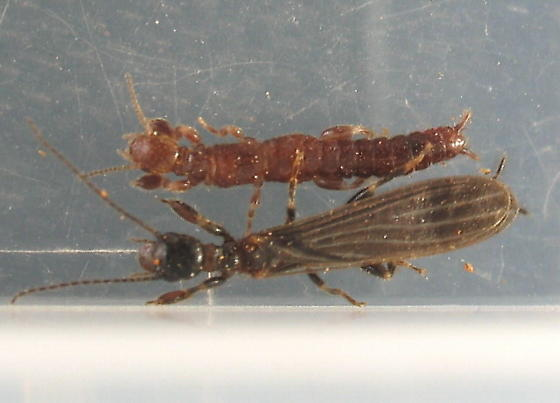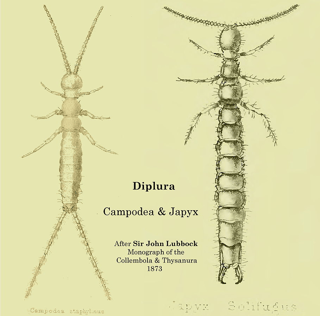UPDATE:
Based on a comment by ArthurJFrost reminding me of the existence of a group of insects I totally forgot about, AND based on a closer examination of the cerci and what appears to be external mouthparts in the image of the OP's specimen, I think this insect might actually be a webspinner!
- These insects would be also about the right size, with the described and shown body plans, but also with short (but non-pincer-like) cerci and external mouth parts as in the OP's image. Female webspinners are wingless [source], as well, as the OP's image also appears to be.
See, for example, the black webspinner (Oligotoma nigra) from New Mexico, USA from bugguide.net:
Source: bugguide.net
See also here for additional images of Oligotomidae species. (by the way, O. saundersii is the type species of Oligotomidae within the Indian subcontinent).
@ArthurJFrost, since you are more the expert than I on hexapods, PLEASE PLEASE write up an answer detailing how we might all feel more confident knowing that the webpsinner (and not the dipluran) is the better answer. Visually it appears to be the case to me, but I think you'd be able to point out some specifics for us all to learn from!
- I will certainly default to you to write up the "official" webspinner answer since my update here on my post is simply to direct away from what I now think is an incorrect answer. I would gladly link to your answer to further emphasize that you came up with this answer.
OLD ANSWER: [Informed guess, but I think it's wrong!]
Based on the thin body plan, extended, segmented abdomen, lack of wings, and pair of posterior cerci, I was immediately reminded of a dipluran (or "two-pronged bristletail").
Sourcce: Wikimedia
It would be good to know the size of your specimen since most diplurans are smaller than 10 mm (though some can reach 50 mm!). A better photo would also be appreciated, since diplurans typically have antennae with beadlike segments, and I cannot tell if that's the case in your photo. I will note that many diplurans have much longer and even filamentous cerci, but others (like your specimen) have shorter cerci.
I am not sure why a dipluran would be inside your house, however, since they live in soil or leaf litter. [source]
Other organisms to rule out:
- Snakefly (Agulla adnixa) -- no cerci (vs. yours)
- Centipede -- too many legs (vs. yours)
- I can't rule out earwigs since I am unfamiliar with the species in India. However, your specimen looks longer, thinner, and possessing smaller cerci than the earwigs I am more familiar with. [A clearer image of the thorax would help to determine if wings are present or not, which (if present) would rule out diplurans altogether and suggest it might be some earwig species I don't know).


